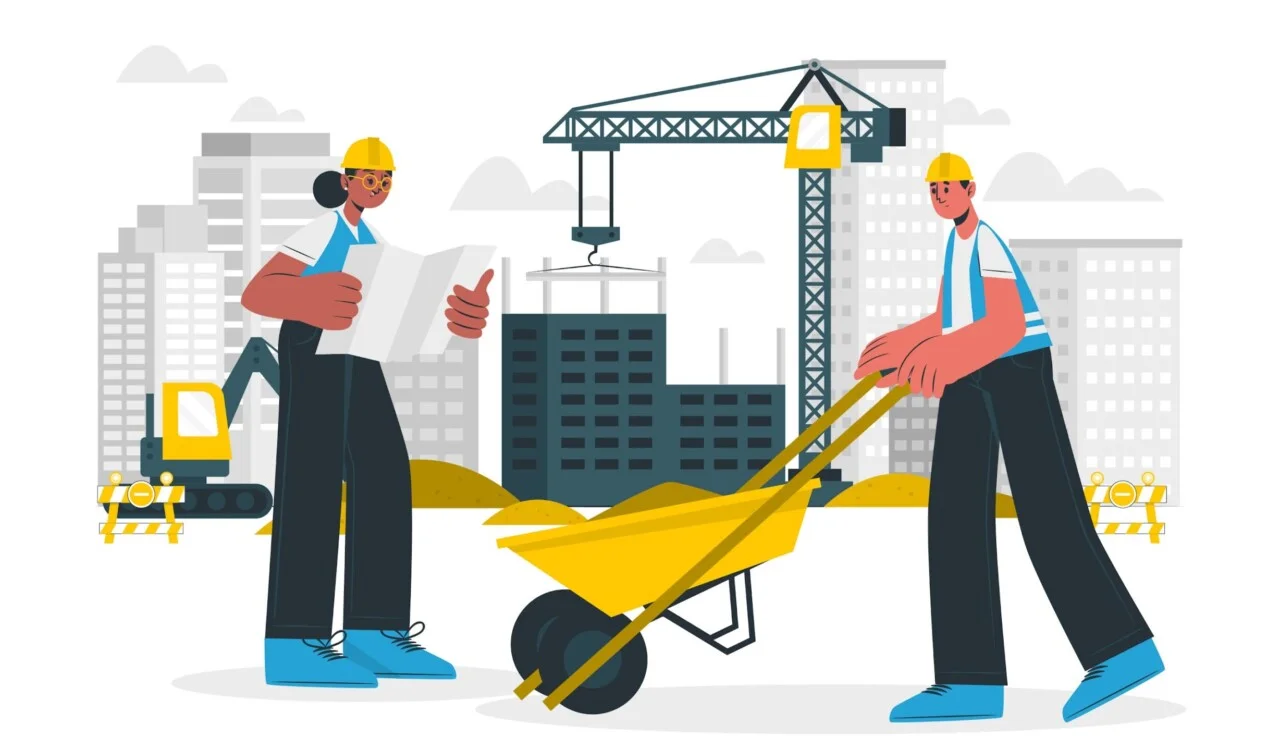Construction stands out as one of the riskiest professions in the USA. It contributed to almost a quarter of all avoidable workplace fatalities in 2021. With a mobile workforce, ensuring employee safety becomes particularly challenging. Most businesses only look at it externally– in terms of safety equipment and gears for the field. However, changing your internal process of safety monitoring and threat escalation with a field safety app can also enhance employee safety significantly.
Construction workers represent only 6% of the U.S. labor force, yet they account for a significant 20% of all worker fatalities in the United States.
Familiarizing yourself with the top five common construction violations cited by the Occupational Safety and Health Administration (OSHA) is crucial. Knowing them will enable you to implement necessary safeguards and training measures to prevent potential hazards.
If you are quick to implement the required safeguards, such as adopting a field safety app, you will have a competitive edge. A safe workplace has the following advantages –
- Boosts employee morale
- Saves potential legal troubles or violations that have heavy penalty
- Increased employee retention
Here are the top five most common construction violations along with the number of violations reported for each in 2021:
- Fall Protection: 5,295 Violations
OSHA mandates fall protection guidelines to prevent workers from falling off elevated areas or platforms and into holes. Different requirements apply depending on the industry. Construction requires fall protection for any work conducted at heights exceeding six feet. - Ladders: 2,026 Violations
Specific regulations govern the use of ladders to ensure worker safety. These rules include keeping ladders clean and free of oil, ensuring their structural integrity to support the intended load, and positioning them correctly, among other criteria. - Scaffolding: 1,948 Violations
Scaffolding is a common fixture on construction sites but carries a significant risk of safety incidents. According to OSHA, scaffold-related incidents in construction often result from issues such as plank or support failure, worker slips, lack of fall protection etc. - Fall Protection Training – 1,666 Violations
Construction employers are required to provide proper fall protection training to ensure employees can identify fall hazards on the job site. This training should be administered by qualified trainers or through approved programs. - Eye and Face Protection – 1,452 Violations
Failure to provide and ensure the use of appropriate eye and face protective gear can lead to serious eye injuries or damage. OSHA mandates that all employers must ensure their employees wear the necessary eye and face protection when working with hazards such as chemicals, acids, flying particles, and other potential dangers.
This data from OSHA about the construction industry can serve as a reminder for safety challenges in the field services industry as a whole. The major reasons behind the safety issues are common for all industries.
Throughout the entire service workflow, various challenges can crop up, leading to reduced productivity, lower customer satisfaction, and potential impediments to overall success. The foremost challenges in this landscape revolves around ensuring the safety of your workforce that has no direct managerial overview. Field service technicians often find themselves in dynamic and unpredictable environments, which can pose significant safety risks.
Field service work comes with several safety challenges that can be harmful to workers. These challenges happen because of some key issues.
Key Safety Challenges in field services
Limited Communication: One big challenge is that the people in charge and the field workers can’t communicate well. They might use traditional ways like paperwork, calls, texts, or emails to share information. This makes it hard to know what’s happening in real-time and can hide safety issues until something goes wrong. Many companies are switching to cloud-based systems to fix this.
Remote Working: Field workers often spend a lot of time working in isolated areas that may have low or no network. Communicating with them becomes difficult in such cases especially in case of an emergency.
Dynamic Work Environments: Field workers, such as facilities management workers do different jobs in different places, so the risks they face keep changing. Managers and workers both need to always be aware of these risks and make sure they are safe.
Physical Activity: Field work often involves physical labor, which can lead to injuries or health problems. This can range from muscle pain to very serious injuries from machines or falling.
Lone Working: When a worker is alone, safety issues can become much more dangerous. They might get hurt in a remote area without a phone signal, or they could face threats from other people. Being alone can also make workers feel isolated and less motivated to follow safety rules.
All these challenges can be solved with better communication, technology, and proper training. Generally, the most effective choice for ensuring the safety of workers is to implement a digital, real-time solution, such as a dedicated field safety app. This solution keeps remote and mobile employees secure, connected, and supported around the clock while they are in the field.
Coupled with site safety measures, a field safety app can enhance your employees’ safety and boost their morale.
Features of a Field Safety App
Real-time Location Sharing: Workers can share their current locations in real-time and managers can monitor them with GPS using a field safety app installed on smartphones.
Well-being Check-Ins: Workers can periodically confirm their well-being through check-ins and in-app communication.
Emergency Assistance: Immediate assistance should be available in case of emergencies or if a worker becomes unresponsive.
Safety alarms: Software solutions allow workers to manually activate an alarm within the field safety app or create a customized safety assessment process to identify potential risks. An employee facing a difficult or unsafe situation can activate an SOS alarm by either pressing a dedicated SOS button within the app or rapidly pressing the phone’s ‘power’ button four times.
Escalate threats: You can also facilitate a multi-tiered escalation of threats in the back office using methods like IVR, SMS, and email. Notifications sent during emergencies may include the user’s location, the nearest emergency contact number (e.g., PSAP 911), and other relevant details.
Visual dashboard: For managers, there’s access to a visual command-and-control dashboard available through both a web platform and a mobile app. This dashboard allows them to monitor the real-time location and status of employees on a map.
Conclusion
In the field services industry (specially construction), safety’s importance is heightened due to remote and potentially hazardous work environments. While OSHA standards exist to minimize risks on construction sites, understanding and implementing them strategically is crucial. This is where a field safety app plays a transformative role, providing 24/7 support, accurate tracking, and effective communication.
Investing in such software not only enhances safety but also boosts morale, productivity, and overall reputation. In both cases, prioritizing safety isn’t just a technology upgrade; it’s a commitment to the well-being of those driving these industries, ensuring a safer, more efficient, and resilient future for businesses as a whole.



